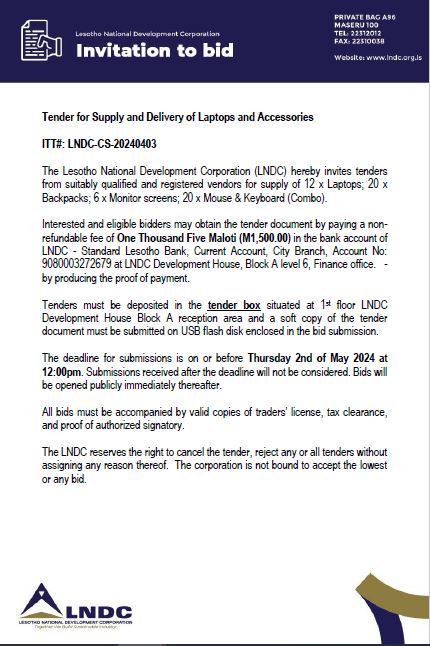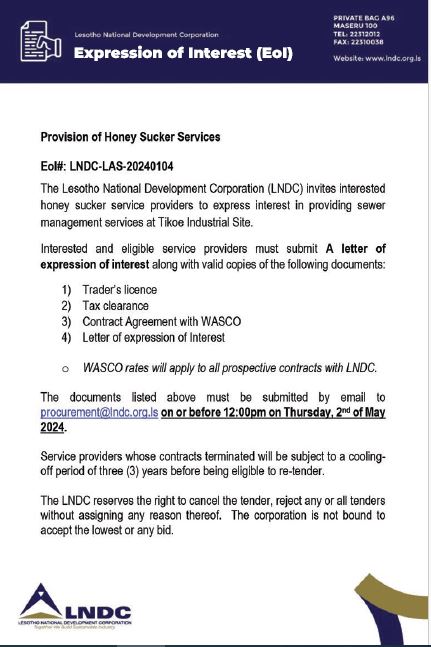Mohloai Mpesi
Residents of the Makoabating village found themselves caught in border lines of two neighbouring districts of Mafeteng and Mohale’s Hoek thus unable to find a real home in the rollout of poverty alleviation initiatives either side.
Geographically, the village is setup in Mohale’s Hoek, close to the neighbouring Mafeteng district unto which electoral constituency dermacation borders say it falls, in the Thabana Morena #52 constituency making it to intersect the two.
At the time when the community faced severe drought in 2016, villagers were brought to a common account of stretching poverty alleviation projects, but the course was unfortunately barred by their own location.
To setup the project, the community needed financial backing for implementation that could see them escape the wrath of hunger and starvation.
According to the Chief of the village, Moopisa Makhosane, they alongside the community councillor, approached the Mafeteng Red Cross Society to come to their rescue, but the voluntary organisation declined their request citing that they ought to be helped by offices in Mohale’s Hoek as their location falls under the Mohale’s Hoek district.
Without backing down, the community advanced to the World Vision but experienced the same woes. They further travelled to Mohale’s Hoek with the same intention but it was all to no avail as those in question reverted them back to Mafeteng saying their constituency is constituted there.
They were given the run-around and sent from pillar-to-post.
Makhosane said that since 2016 the village experienced a severe and extreme drought which left the place dry, desolate and unfit for food production as crop fields developed dongas. The situation birthed hunger and starvation, compelling villagers to share water from rivers and wells with beasts.
“We were living from hand-to-mouth,” he said.
“There was no water and food. We had to share water with animals. The land was dry without rain, and we suffered extreme poverty while we watched our animals die because of starvation and thirst,” he said.
“There was no production from the fields at all. The fields have cracked open.
“We looked like beggars and felt abandoned as we knocked on from door to doors for help but to no avail.
“Until last year when we approached (IEC) in Mohale’s Hoek to give clarifications regarding the constituency but until now we have not been helped,” he said.
The food shortage was exacerbated by the miners working in South Africa who lost their jobs as villagers were relying on them for help.
“Many people lost their jobs at the mines in 2015 and the situation got worse. They were helping us a lot because if one doesn’t have food but has animals, they would buy your animal even if they don’t need because life comes first,” he said.
“We relied on each other. The public would quickly notice when one doesn’t have food, so we helped each other. At some point we lost hope, thinking that no one will come forth. Now not more than 10 people are working,” he said.
“Climate change has affected us a lot and we are no longer going to get food production because even this harvest season we are not going to harvest maize since heavy rains washed away our plants,” he said.
“Heavy rains destroyed our roads and fields. We are supposed to bury someone next week at Ha Bera, we don’t know how the casket will get there,” he said.
The Mafeteng district, according to the Adaptation Fund project document under first scoping mission and Community Based Participatory Planning conducted by WFP in 2017 and 2018 respectively, comprised of lowlands and foothills and consists of mainly marginal lands with low soil fertility, the place suffers high rates of soil erosion and environmental degradation, while livelihoods are dependent on cereal production and cash crops.
Mohale’s Hoek and Quthing districts lie in the drought-prone southern lowlands, where there is minimal arable land with little vegetation cover.
The study reveals that a large rural population that depends mainly on rain-fed subsistence farming remain exposed to chronic food insecurity and malnutrition. In 2016, over 709, 000 people were in urgent need for food assistance, with eight of the country’s 10 regions predicted to experience a high food deficit in 2026-17. Makoabating was no exclusion.
According to the 2018 Vulnerability Assessment, 257, 283 people (18%) of the rural population (very poor and poor wealth groups) are in need of humanitarian assistance, while 51, 683 people (9.2%) of the urban population require assistance.
The valuation stated that the aggravating factors are that the majority of poor rural households do not have adequate access to agricultural land and lack resources such as fertilisers and high-yielding seeds; thus production and output levels are very low and inefficient.
In an attempt to cope with lack of food, many communities took detrimental measures such as skipping meals or selling off assets, thus further compromising their livelihoods and adaptive capacity.
However, the troubles of the village were put to rest when the Adaptation Fund, World Food Programme (WFP) Lesotho Meteorological Service (LMS), Ministry of Forestry, Range and Soil Conservation through the introduction of Improving Adaptive Capacity of Vulnerable and Food Insecure Populations in Lesotho (IACOV) project which kick-started last year October.
The project was funded by the Adaptation Fund with money amounting to $10million (M150, 432, 787. 61) and set to respond to the needs of Basotho living in extreme poverty due to climate change, Makoabating community was saved by the bell.
The project’s mandate is to aid communities in the southern region of Lesotho; Mafeteng, Mohale’s Hoek and Quthing which according to the study, suffers the consequences of climate change and to adapt through its refashions by strengthening resilience at community level through community based concrete adaptation and resilience measures for improved food systems.
The Makoabating community embarked in silt-traps, key-hole plots and poultry of local breed where they are paid M1, 200 per month by IACOV with work description to toil four hours at the project site and four hours at key-hole plots and poultry farm at home.
The Community Project Coordinator, Letuka Lehana stated that they started the project to adapt to the changes of climate which impacted negatively their livelihoods. He said they continue upholding the project even when its term has expired in 2024 since the plan changed lives.
“After receiving help from WFP and Ministry of Forestry in 2019, we started the process of augmenting our veld in an attempt to be resilient and adapt to the climate change.
“We removed the invasive shrub and build the Stone-line to stop soil erosion. Last year we met AICOV which featured in the already existing project.
“The reason we ended having this project is because we were badly affected by climate change. We are working four hours on Stone-lines and another four hours on key-hold or poultry.
“We will continue helping with this course because we know its importance and how it changed our lives. We will not stop even when the term of the project has expired,†he said.
The 68 families with an opportunity to add 80 which has been contemplated to start in April, thus totalling to 148 more are given a chance to rotate after three months to all get a piece of a pie at the project.
“As a result of the observed climatic trends of recurrent and prolonged drought, dry spells, floods, early frost, and associated increasing incidence of pests and diseases, agricultural productivity has been steadily declining in recent years, further exacerbating the country’s food and nutrition security and negatively impacting on overall economic performance,†the document reads.
According to the National Resilience framework, drought is the main natural hazard contributor to Lesotho’s high-level of vulnerability and food insecurity, followed by heavy rains and extreme weather variability.
“Changes climatic conditions have already affected the production of some staple crops, and future climate change will continue to threaten and exacerbate the situation.
“On-going climate variability means that past livelihood coping mechanisms are becoming increasingly inadequate to cope with the existing situation, raising strong concerns about how projected climate change will be dealt with.â€
The document further addresses that, “The apparent increase in the frequency, magnitude and duration of hazards such as drought, flooding, hailstorm and strong winds in recent years leaves local communities, especially more vulnerable groups, with little or no time to recover from one event to the other. Thus, progressively eroding their capacities to cope with and recover from such events.
“The 2016 El nino induced drought resulted in 49% of the rural population requiring emergency food and livelihood protection interventions well into 2017,” the document read.
According to the document, there is still a large void to general awareness of the population, especially vulnerable poor people, on the causes and impacts of climate change. Many communities showed little to no understanding of climate change and are reported to have been heeding to the priests and traditional healers advises to challenge the scientific advice of Government Meteorological Services.
To retrieve the continually prevailing climatic condition, the media practitioners were hooked in a training to develop a mantra of reporting accurately about the awareness of climate change. A week-long workshop was held Mohale’s Hoek at Hotel Mount Maluti last week.
“The media reporting manual is for training journalists in appropriate coverage and reporting of climate change, to generate a culture of maintaining media attention and therefore public awareness and knowledge on climate change information, impacts and solutions.†The document reads.
According to the same study, over 20 years over $34 (M511. 24) and 42kg of CO2 emissions can be saved per dollar invested, after deducting the investment cost. When forecast-based financing is combined with early response to a climate shock and resilience or disaster risk reduction activities, the benefits are maximised.
“A 2018 USAID study on Ethiopia, Kenya and Somalia indicates that early response to drought, combined with safety net transfers and resilience-building activities, could over a 15-year period save US$4.3 billion (M64.66 billion), or an average of US$287 million (4315.46 million) per year.
“A DiID-Funded study also founded it to be cost effective, with benefits-cost-to-cost ratio ranging 2.3:1 to 13.2:1, depending on the country. The same study showed that early response is far more cost effective than late humanitarian response. For every USD 1 (M15. 04) spent on disaster resilience, USD2.9 (M43.61) was saved in potential humanitarian expenditure.





